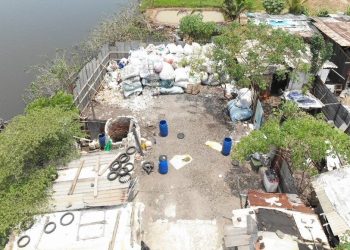Jakarta, Indonesia Sentinel — Indonesia’s Ministry of Health (Kemenkes) is urging the public to remain vigilant against the growing risk of Acute Respiratory Infections, as extreme heat and worsening air quality continue to impact parts of the country.
Acute Respiratory Infections refers to infections that affect both the upper and lower respiratory tracts, including the nose, throat, sinuses, bronchi, and lungs. These illnesses can be caused by viruses, bacteria, or fungi. According to the Health Ministry, hot weather and air pollution are major contributing factors to rising cases, as they aggravate respiratory conditions.
According to CNN Indonesia, in a recent public advisory, the Ministry warned that harmful particles such as fine dust, vehicle emissions, and industrial pollutants can damage the respiratory system. The public is encouraged to recognize early symptoms of ARI to take timely preventive and medical action.
Symptoms of Acute Respiratory Infections include:
- Cough (dry or with phlegm)
- Nasal congestion
- Sore throat
- Fever
- Shortness of breath or difficulty breathing
- Headache
- Muscle and joint pain
- Fatigue
- Hoarseness or voice loss
- Runny nose or sinus pain
- Nausea, vomiting, or diarrhea
- Loss of appetite
The Ministry recommends seeking medical attention if one or more of these symptoms occur, emphasizing that early intervention can speed up recovery and prevent further spread.
Read Also:
Indonesia Cracks Down on Illegal Fish Aggregating Devices in Papua Waters, Saving Millions in Losses
“We can protect ourselves and those around us from the risks of Acute Respiratory Infections that may arise due to air pollution. Good respiratory health is key to living a healthy and active life,” the Ministry said in a written statement.
The warning comes as the Meteorology, Climatology, and Geophysics Agency (BMKG) reports rising temperatures and a spread of hotspots in various regions. According to BMKG, the strengthening of the Australian Monsoon Index is driving dry air from Australia toward southern Indonesia, potentially expanding drought conditions across southern Java, Bali, the Nusa Tenggara islands, and parts of southern Kalimantan.
Despite the dry season’s expansion, areas such as West Java, East Java, South Sulawesi, Maluku, Southwest Papua, and Central Papua are still expected to see high to very high rainfall, exceeding 150 mm per 10-day period, throughout June 2025.
(Raidi/Agung)


























